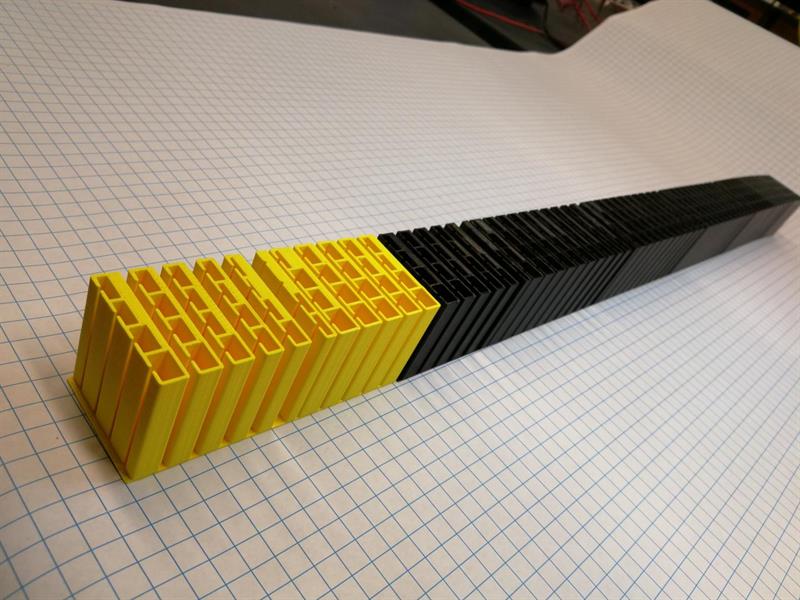Previous theoretical approaches to engineer such a device have struggled to simultaneously control both the transmission and reflection of sound in exactly the desired manner, and none have been experimentally demonstrated.
While the Duke metamaterial is made from 3D printed plastic, the shape of its features – not the properties of the plastic – are important, allowing it to manipulate sound waves.
The metamaterial is made of a series of rows of four hollow columns that are around 13mm wide with a narrow opening cut down the middle. While the device demonstrated by the researchers is 40mm tall and over a metre long, it could theoretically stretch on forever in either direction.
 The researchers control how the device manipulates sound through the width of the channels between each row of columns and the size of the cavity inside each individual column. Some columns are wide open while others are nearly closed off.
The researchers control how the device manipulates sound through the width of the channels between each row of columns and the size of the cavity inside each individual column. Some columns are wide open while others are nearly closed off.
To understand why, think of someone blowing air across the top of a glass bottle – the pitch the bottle makes depends on the amount of liquid left inside the bottle. Similarly, each column resonates at a different frequency depending on how much of it is filled in with plastic.
As a sound wave travels through the device, each cavity resonates at its prescribed frequency. This vibration not only affects the speed of the sound wave but interacts with its neighbouring cavities to tame both transmission and reflection.
“Previous devices could shape and redirect sound waves by changing the speed of different sections of the wave front, but there was always unwanted scattering,” said Junfei Li, a doctoral student and lead researcher. “You have to control both the phase and amplitude of both the transmission and reflection of the wave to approach perfect efficiencies.”
To make matters more complicated, the vibrating columns not only interact with the sound wave, but also with their surrounding columns. Li needed to write an ‘evolutionary computer optimisation program’, to work through all the design permutations.
The team demonstrated that one set of solutions can redirect a sound wave coming straight at the metamaterial to a sharp 60-degree outgoing angle with an efficiency of 96%. While this setup was designed to control a sound wave at 3,000Hz, the metamaterials could be scaled to affect almost any wavelength of sound.
The researchers now plan to use these ideas to manipulate sound waves in water for applications such as sonar.





